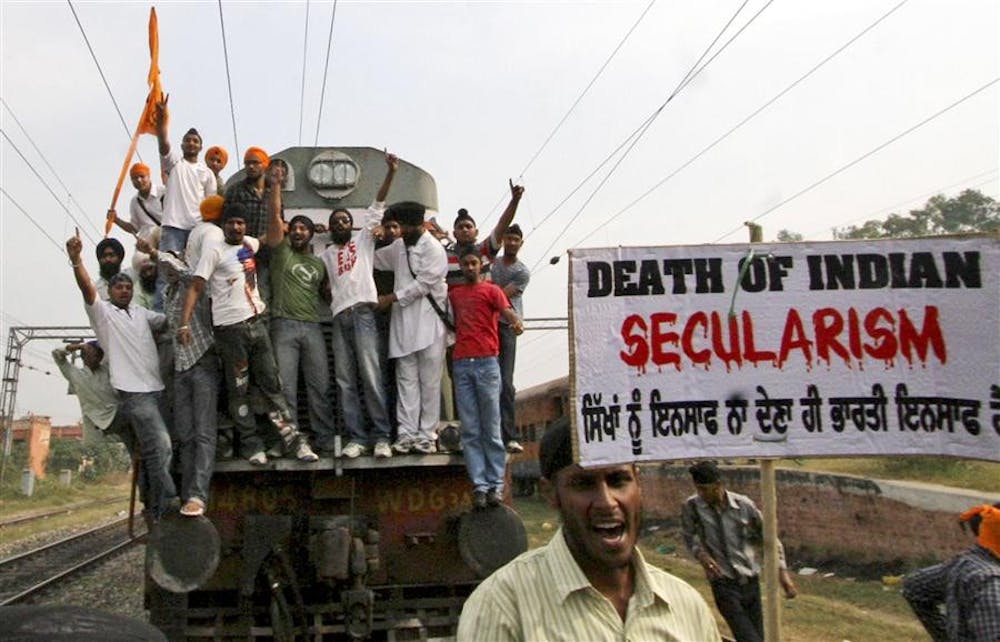HYDERABAD, India - In India, everyone knows what everyone else’s religion is. If it’s not apparent through dress, it’s blatantly obvious after learning someone’s name.
Muslim men generally wear skull caps, and Muslim women generally wear head scarves.
Hindu women tend to wear saris or salwar kameezes, which are a type of baggy pants with a kurta or long shirt.
Buddhists tend to wear specific strings and robes.
The bindi, or dot on the forehead, further marks Hindu women, and religious sect is often displayed by different forehead decorations, prayer beads and strings on wrists or waists.
This extensive, blatant display of religion is perhaps initially inspiring because at a surface level, India is a relatively peaceful country with many different religions and religious sects living together in general harmony.
But, then again, on a surface level, so is the United States, and while there is a level of acceptance in the country, intolerance issues of religion, class and race are still common.
Like in the States, religious and caste minorities in India often wind up being the butt of societal jokes and racial slurs.
In southern India, I’ve heard several racial jokes mainly against two groups: Sikhs from the north and local Muslims.
At first, there is no racism apparent in everyday activities. However, when I really sat down to talk to people, I found intrinsic prejudice against these two groups.
For example, people often recount the joke that Sikhs wear turbans because otherwise they’d lose their brains.
People often scoff at the devout prayers of Muslims, and the last official Sikh holiday was ignored by most professors at Hyderabad Central University even though the university officially recognized it as time off.
People say these religious tensions are in good fun and “just the way things are.” But sometimes these prejudices and religious misunderstandings turn into violence.
I’ve been staying in Hyderabad, the city with the highest Muslim population in India.
When I go into the Old City, it is difficult to believe that the entirety of India is not Muslim.
I’ve found the Old City area of town to be vibrant, even though we are cautioned not to go there on Fridays because of the masses of praying people outside the mosque.
Still, this predominately Muslim area has tension between different religions.
In 2007 this tension turned to violence when the primary mosque in Hyderabad was bombed, killing seven and wounding 35.
While this was perceived as terrorism, there was also uproar against law enforcement officers who did little to protect the people.
The police cleared worshippers from the area with tear gas and batons, leaving people vulnerable both to bombs and the people whose job it is to protect them.
While things have improved, sometimes religious tensions are still high, leading to the question of whether Hyderabad is permanently a peaceful city of tolerance or a center of mounting tensions.
Sikhs, Muslims face prejudice in Hindu nation

Get stories like this in your inbox
Subscribe



